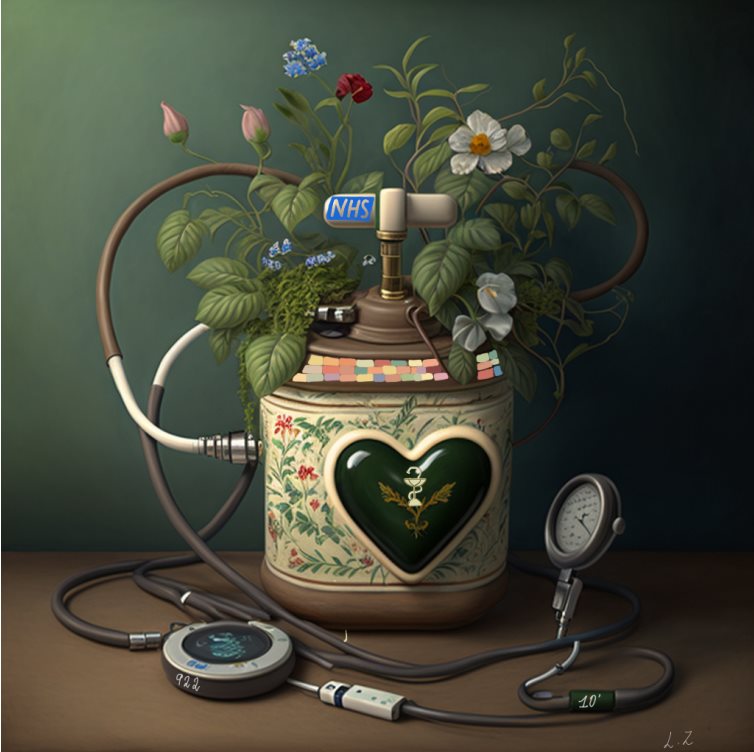"Flourishing" by Liliane Zhukovsky

Reflection
The Medical Flourish digital painting exhibits the emotional doctor-patient experience. The 37 tiles adorning the flower pot symbolise the average number of patients an NHS GP sees a day [1]. The tiles are like seeds, each representing a unique patient. With the right conditions in place, each of these seeds have the potential to flourish into healthy flowers.
The need to be able to connect emotionally with every patient requires empathetic processing, a skill one acquires in their continuous journey through meaningful patient interactions.
Every patient is unique, providing the possibility to learn from every presentation. The uniqueness of the patient is depicted by the variety of colours and sizes of each tile.
The overlapping of the tiles represent the interconnectedness of patient care, illustrating how the care provided to each patient is influenced by the accumulated knowledge and experience gained from previous patients. This forms an ever- evolving process of care, as each patient encounter shapes the next. This is further depicted in the connection between the medical tools and the flowers, suggesting the reciprocal relationship between the doctor and the patient. This results in a more rich and nuanced understanding of patient needs and experiences. However, the physician has limited tools to do so.
The medical equipment is portrayed as the roots of the flower pot. It serves as the foundation for patient treatment and the flourishing of the flowers. Yet, their potential for growth is limited as they are unable to adapt to the unique needs of every patient. This is reflected in their dark, monotone colour, which contrasts with the vibrant, colourful tiles. Thus, while the medical equipment is a crucial aspect of a consultation, it is unable to fully embrace the complexity and diversity of the patients it treats.
The tools don’t treat the individual patient, but they treat a patient ID (depicted by the 922 number), and are limited by time (10’), highlighting the need for holistic care to be provided in other ways.
In the centre of the pot, the green heart with the bowl of Hygieia signifies the core of every doctor-patient interaction, which is the expectation and desire to treat and heal.
This is frequently achieved and patients healed through meaningful interactions will bloom into tall colourful flowers. However, the other portion of patients, depicted as leaves, will feel emotionally disconnected and unsafe preventing them from flourishing.
This is further exacerbated when the physician is constrained by the limitations of the NHS, indicated by the handle which pumps the necessary water and fertiliser for patient healing into the pot. However, the lighter green background coming in from the left invites an optimistic outlook on the future of the doctor-patient relationship as it is filled with light and fertile soil, nurturing empathy and connection.
The use of digital art was deliberate to emphasise the technological advances happening in the field of medicine, but this is juxtaposed with the old-retro feeling of the picture, reflecting the human side of medicine, one which relies on human connection.
[1] Mehlmann-Wicks, J. (2023) Safe working in general practice, The British Medical Association is the trade union and professional body for doctors in the UK. British Medical Association. Available at: https://www.bma.org.uk/advice-and-support/gp-practices/managing-workload/safe-working- in-general-practice (Accessed: April 21, 2023).